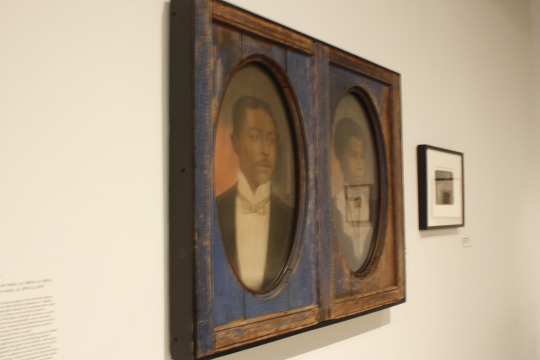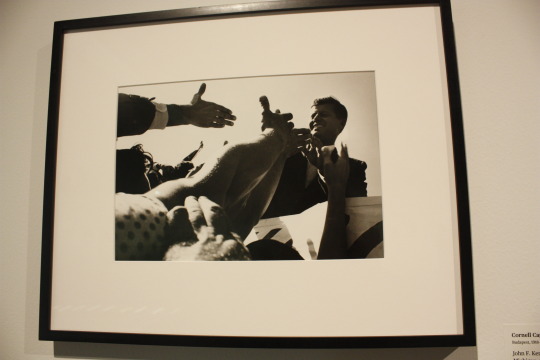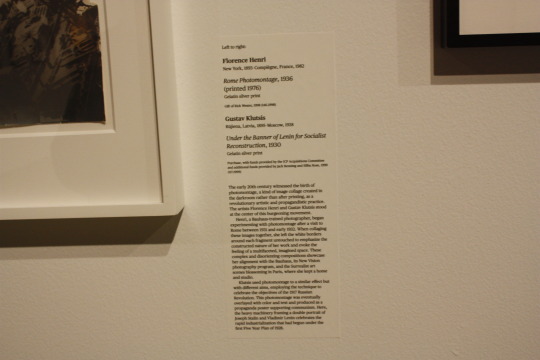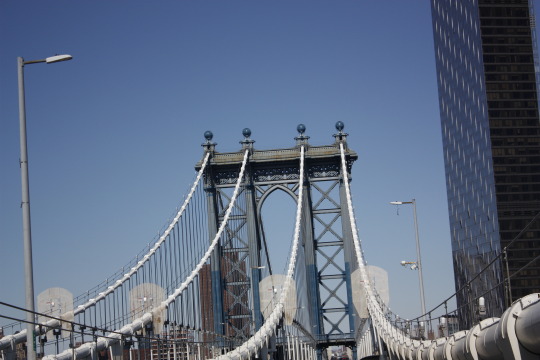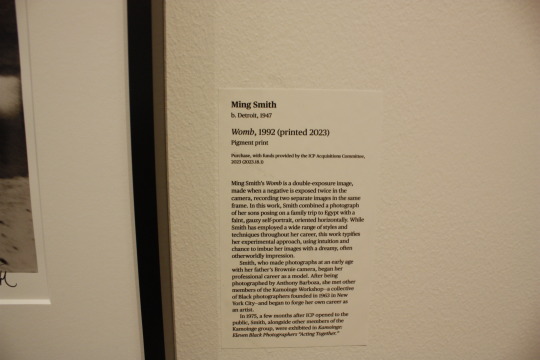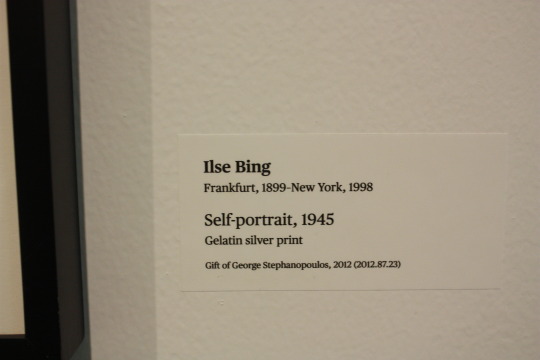Text
Final Project
Since I was at a very young age, I was always obsessed with cameras, and how such a little device can bring me so much joy. My uncle gave me a camera as a gift, and that slender camera used to be with me everywhere. I remember the excitement of waiting for the pictures to be developed. I remember the good, the bad, and the ugly ones. Sometimes pictures taken were perfect, but other times they were too dark, too bright, too blurry, and at times, they came out double exposure. There is this special feeling when you look at a moment you lived in the past that was captured and lives forever by a camera, saved for you. That phenomena in itself activates a flashback, a memory, a lifetime. For example, looking at a picture of yourself as a child smiling with no worries in the world, and comparing it with yourself now as an adult carrying the world on your shoulders. To me, photography was all about capturing memories until I took the course Photography 101, where I realized that I can make art by playing with some of the tools available in the camera. I feel that a whole new world has just opened its doors for me. I am so grateful that I am now equipped with a decent understanding and a camera to take my journey forward to capture the world and make art through my lens.

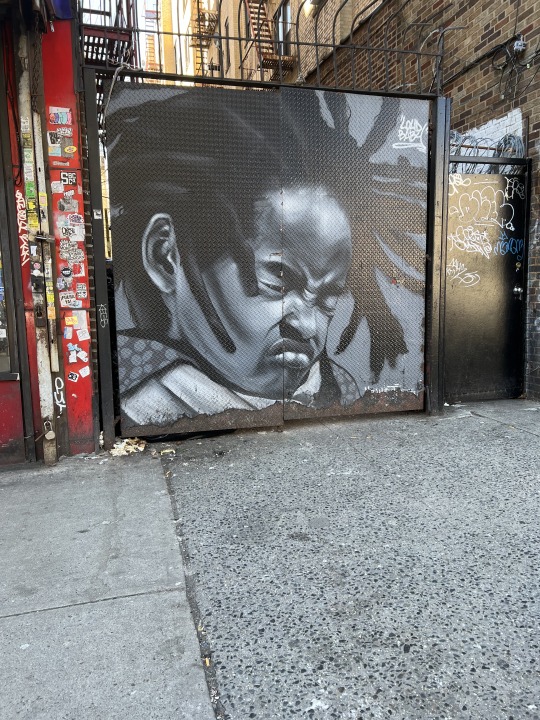


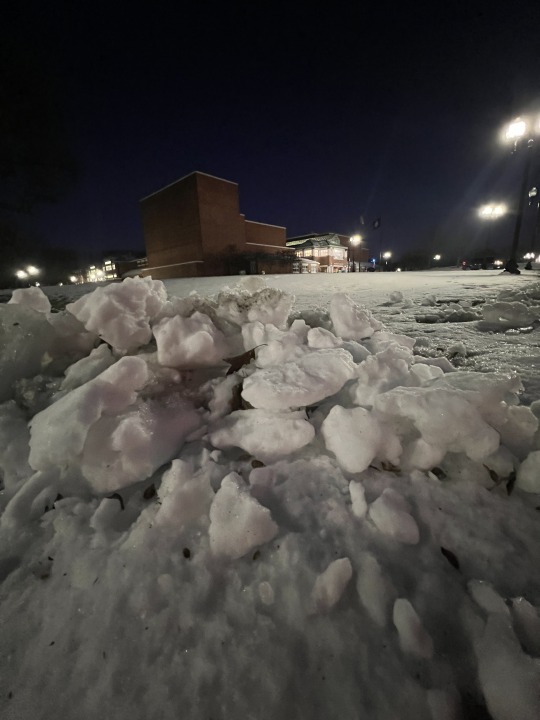
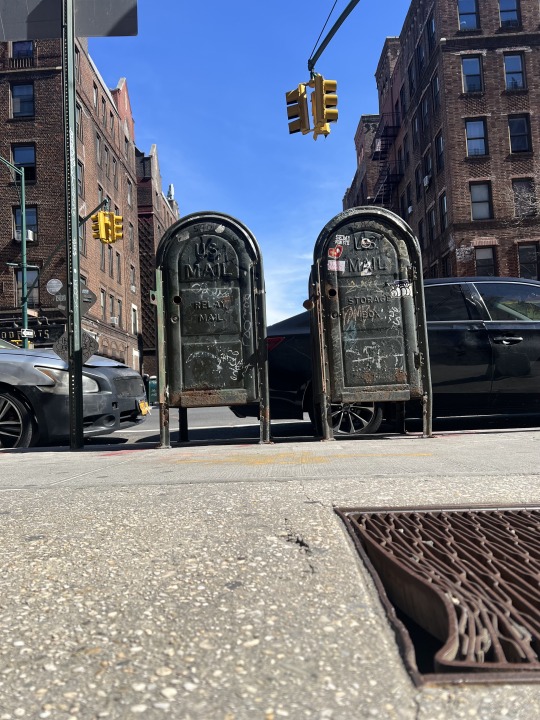

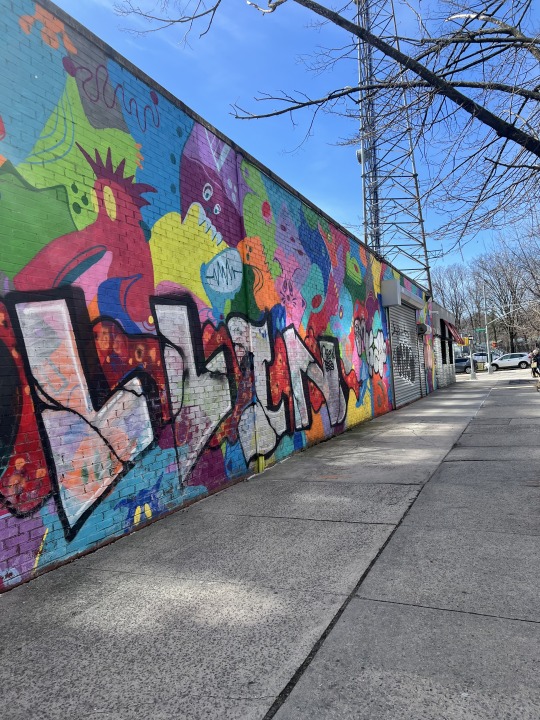

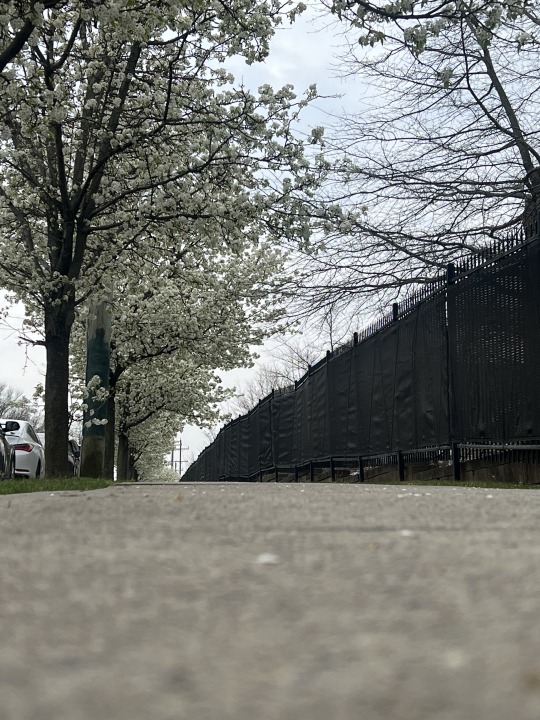


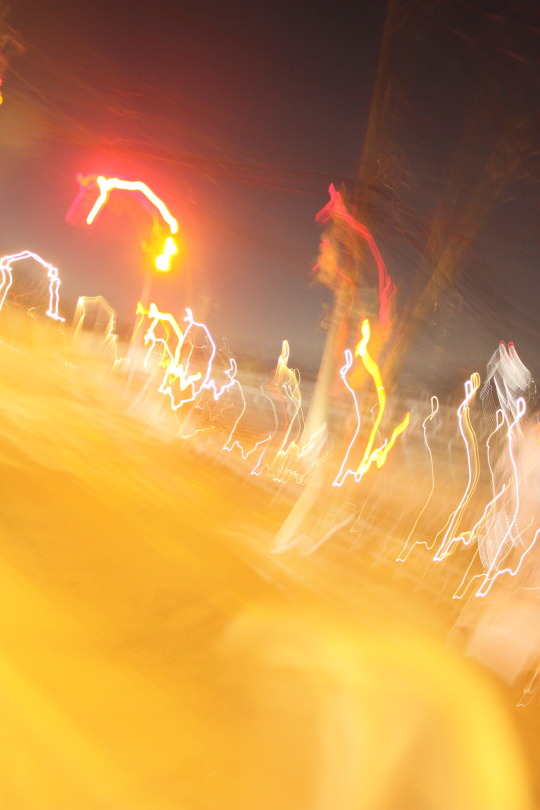



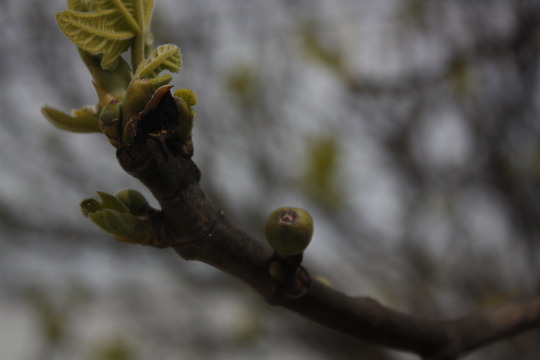
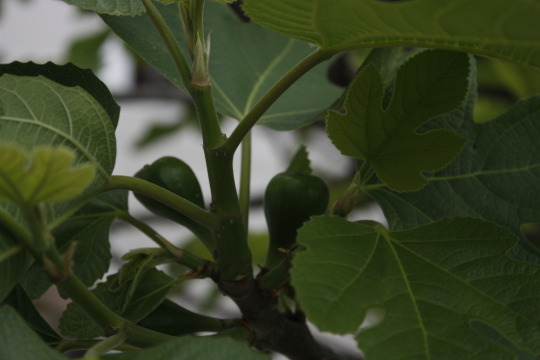
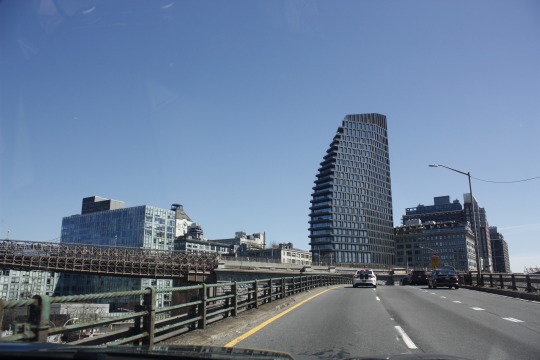
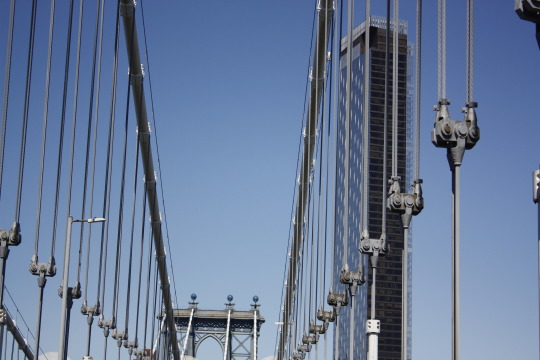
0 notes
Text
Week 12 - Pitch Black -Hiroyuki Ito
What?
The photo is so dark you just see the florescence light on the top and a man's face and hand reflected under the light. It is hard to tell if this is an indoor or outdoor photo.
How?
With the light focused on the man's face and not using any other source of light the picture was so dark. Black and white file was used. The shutter speed was fast because not of light was given in.
Why?
To capture a moment of pondering. Narrative.
0 notes
Text
Week 11 - Homeless Child at the age of 7
What?
A mother carrying a child on her back with their backs to a gas station. They seem to be walking away from the station.
How?
This photo was taken without flash mostly with a low number aperture because we can see the kid and his mom clearly but the background, gas station, is blurry, so the number could be f1.4 or f1.6.
Why?
Documentary.
0 notes
Text
Week 10 - Husband and Wife
What?
Husband and wife mostly in a dispute. The man is looking down in shame. The women is really upset.
How?
Film camera with flash because we can see the reflection of the flash on the figurines. Aperture is low in numbers f4. Shutter speed is quick. The blurriness in the back show shallow depth of field.
Why?
Someone who is familiar with these disputes wanted to catch that moment to show it to them.
0 notes
Text
Mini research - Samin Ahmadzadeh
”I believe that when we consider the rich and diverse experiences of individuals – each with their ancestors, each from different places and cultures – we begin to see that we are more alike than we are different. In this installation I was seeking to highlight our common humanity and the things that unite us, rather than focusing on what sets us apart” (Talking Pictures). Samin Ahmadzadeh is an Iranian artist who combined the art of photography and weaving. Samin is Iran born whose father studied abroad in boarding school from the age of three in the UK. Samin’s father was raised in the UK, while his family remained in Iran. Her father’s cross-cultured upbringing between the East and West brought the Western idea to Samin’s life. Samin, born in Iran, a country known for its art in fabric and carpet weaving; weaving was a comfortable and familiar place for her. After receiving a bachelor’s of photography in Iran, and a Master’s in Britain. Samin completed her Master’s in 2013, while completing her Master’s she began incorporating her Eastern heritage, and the Western culture into her photographs. The Iranian tile work and the Islamic architecture influenced her. Weaving became a new way of expressing her thoughts and ideas through photography.
Samin began by using family photos going back to the 1920s. weaving also helps her manipulate the photograph’s story by hiding or exposing certain parts of the images. When someone takes a photograph, they are capturing a moment and telling a story, for Samin, she is able to combine and outsource in her weaving process multiple photographs into one. Samin is known for weaving photographs, her photographs are more complex than just a conglomerate of tiles, she covers landscape, people, and has a combination of landscape and people. The combination phenomenon, reflects ‘experiences’ the relationship of the people and the landscape and the effect it has on the person (Talking Pictures ). “I believe that the landscapes we live in help form who we are through the way we individually experience and interact with and in them. The meanings we come to associate with those experiences shape our persona, giving us our individuality” .
While in the UK, Samin visited the boarding school her father attended, she found an outstanding collection of archives from when her father was there. This archive was the spark to her ‘memento’ body of work. This body of work not only helped her relate to her father’s childhood, it also helped her weave his identity into an image. The cross culture of being brought up in the UK and his family visits in Iran. As mentioned above, Samin’s photo weaving covers people, landscapes, and a combination of people and landscapes. This research paper will discuss two bodies of work, the people, one to be precise, “memento” which is about her father. The other will be landscapes, because Samin believes that landscapes or environments structure people.
‘Memento’ is a body of work that shows the background behind her father’s upbringing. An Iranian boy, being raised in a British world. The weaved photographs show the two different worlds her father was brought up in. The different cultures and the contradicting values (memento). Samin took photographs from her father’s childhood while in Britain, and while in Iran, shredded them, and combined them to show the different cultures. “This final abstracted image can be interpreted as a recall of his unconscious being formed as a result of his life experiences between an Eastern and a Western society.”
When looking at her photo weaves of her father, you can see in ‘memento 2’ the photo is 59x84cm, it’s a weaved photo of two colored images, her father as a child and in the larger area, her father grown wearing his graduation gown. In another photo ‘memento 1’ it is a black and white photo, also 59x84 cm, you see a photo of her father as a child, and in the larger area, it covers a family portrait with adults holding toddlers and children. (unraveling-the-tapestry) ‘Landscapes’ is a body of work that consists of weaving photographs of environments. Samin believes that the different landscapes we live in and are brought up in, construct who we are today. Since we learned to live within them, it is only acceptable that they shape what we have become. “We have built on them, harvested the resources and marvelled at them as they are immortalised in our art, mythology and our memory” (landscapes). ‘Remembering the morning in Bandar Abbas’ is a handwoven photograph on Birch Ply - 25.5 x 17.3 cm, is part of Samin’s Landscape body of work. The viewer can see how Samin’s weaved Bandar Abbas, a port in Iran, (Bandar Abbas) being that Samin was born in Iran the viewer now has a perception of her upbringing and the environment she was surrounded by. Another photo displayed in Samin’s landscape body of work, ‘Out until dusk’ Handwoven Photographs on Birch Ply - 15.8 x 10.5 cm, the viewer can see the beauty of a beach with people enjoying themselves, the weaving shows the views of two perspectives of the beach, sunny and purple skies of dusk.
Landscapes, better known as our environments, are an intricate part of our lives. They affect the way we view the world and our upbringing. Someone born and raised in New York City would have a completely different perspective on life compared to someone born and raised in Arkansas or in a village in Yemen where they are surrounded by farms and mountains. “With her Landscape series, she’s particularly interested in how our identities are shaped by the landscape we inhabit, and how that is expressed in different cultures, art and mythology” (Land Revisited).
Through this weaving technique, Samin was able to capture every multilayered aspect of the East and West. “I apply the interwoven images to birch plywood surfaces that are then sanded and varnished, resulting in a three-dimensional object… The process of physically manipulating portraits allows me to explore the relationship between form, colour and surface to illustrate my ideas on memory” (Samin Ahmadzadeh). Samin’s work overall, proves that we are a product of our environment. She also shows the viewer that her weaving techniques are a combination of memories, worlds, and views. It is amazing how Samin can manipulate images together to tell a story in an image.
In conclusion, Samin Ahmadzadeh's artistic journey, enveloped in her unique combination of photography and weaving, serves as a powerful evidence to the interconnectedness of humanity. Through exploring her heritage, influenced by both Eastern and Western cultures, she emphasizes the notion that despite our diverse backgrounds, we are basically united by our shared experiences and common humanity. Through her bodies of work she skillfully portrays the intricate layers of cultural influence, personal history and environments. Samin’s work is simply stunning.
References:
0 notes
Text
The Intimate Life
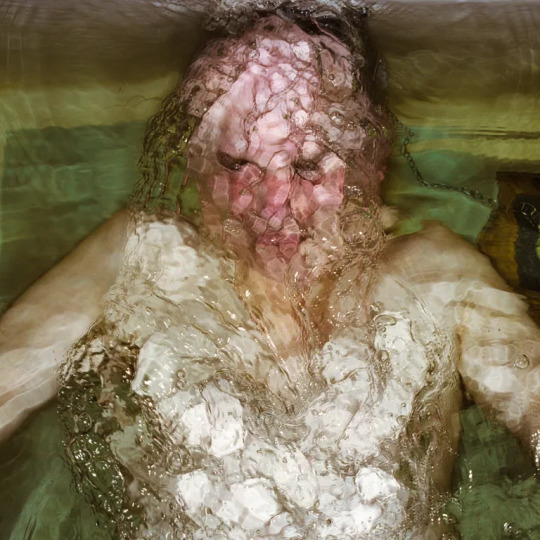
Colin’s Gray’s body of work takes the viewer out of the box. His Restaging the Parents was an outstanding take on truly revolutionizing the normal way of taking family pictures. He unnormalized the standard family pose. Unlike “normal” pictures where they’re pretty, funny, and somewhat secretive. This was a different kind of staging, one that takes the viewer inside their intimate and private lives, their thoughts, and feelings, exposing secrets, and showing the backstage story to families, the ones people do not normally show or tell in photographs. He staged his parents in a way no one would think of, sort of exposing them to the world.
‘In Sickness and In Health’ No.10 is very interesting. At a time where his father “Ron” was at a low due to Colin’s mother “Rene” having a stroke and being hospitalized, Colin took advantage of his skills and helped his father express his feeling about Rene. In an interview, Colin describes the body of work as being therapeutic for people seeing it, because they can relate to their experiences when having to care for an ill, dying loved one. Colin had Ron immerse himself in water as shock therapy to help him speak about his feelings. The picture speaks a lot more than that, seeing him submerged in water is typical visual for anyone who is going through a difficult time, the feeling of drowning, and being closed in, not being able to grasp some air when your loved one falls into a sudden illness and is dying. Colin’s intention was shock therapy for his dad, and therapeutic and relatable for viewers, but it was ultimately a truthful visual story that showed what a person is going through mentally at such a difficult time.
Refences:
0 notes
Text
Week 9 - Still Life NY 2001
What?
A window sill with some fruits and vegetables scattered throughout the surface. The window glass reflecting these fruits and vegetable. and the he traffic can be seen through the foggy window. A tape cassette is
How?
The photo was taken using a manual camera and a film which we see its container in the picture. The light is the natural light from the window.
Why?
It was stagged. The photographer Wolfgang Tillman pictures are mostly still life of fruit and vegetables.
0 notes
Text
ICP Exhibition - 3/24/24
The International Center of Photography has a variety of photographs from political views, historical fashion, to contemporary, and mysterious. There were more than three hundred pictures with different sizes and ways of installation. Every photo had a brief description walking you through the photograph and its meaning and even some of the techniques used. The description also states the photographer (if known) and the year they were born and or deceased, the title of the photo (if known), the year taken or printed, the location of the photograph (if known), and at times, the thoughts of the photographer. They also list how ICP obtained the photograph, whether through purchase, donations, etc.. The atmosphere was quiet, people were taking their time reading descriptions of photos and discussing them through whispers. The lights on the third floor were dim, there were spotlights on the walls, where the photos were displayed.The third floor also held older pictures going back to the 1848, historic pictures, they were mainly black and white photos. The second floor was bright, the lights were on, and most of the pictures were colored. The second floor also held more contemporary, and fashionable photos, as well as hipsters photographs. The newer photos were displayed on the second floor, they were mainly from the 1980's on.
It was so hard to pick only two pictures, but after going through the list a few times, I decided to pick two that are somehow modern. The first photo of my choice was by Ming Smith, born in Detroit in 1947. The photo is called Womb, it was taken in 1992 and printed in 2023. Pigment print was used and it was purchased by funds provided by the acquisition committee of ICP 1/18/2023. Womb is a double exposure photograph. This means the negative in the cameras was exposed twice, where two different pictures are printed on top of each other. The photo is unique when seeing, you can observe the pyramids right away and two young boys in front of them, when you tilt your head to the right you can see a portrait of one of the boys horizontally across the photograph of the pyramids.
“While Smith has employed a wide range of styles and techniques throughout her career, this work typifies her experimental approach, using intuition and chance to imbue her images with a dreamy, often otherworldly impression. Smith, who made photographs at an early age with her father's Brownie camera, began her professional career as a model. After being photographed by Anthony Barboza, she met other members of the Kamoinge Workshop-a collective of Black photographers founded in 1963 in New York City-and began to forge her own career as an artist. In 1975, a few months after ICP opened to the public, Smith, alongside other members of the Kamoinge group, were exhibited”.
The second photo of my choice was by Carrie Mae Weems, born in Portland, Oregon in 1953. The photo is called Mirror, Mirror and was taken in 1987, and Gelatin silver print was used. ICP obtained the photo as a gift from Julie Ault in 2001. The photograph reads “”LOOKING INTO THE MIRROR, THE BLACK WOMAN ASKED, "MIRROR, MIRROR ON THE WALL, WHO'S THE FINEST OF THEM ALL?" THE MIRROR SAYS, "SNOW WHITE, YOU BLACK BITCH, AND DON'T YOU FORGET IT!!!"”. I sensed the picture having a dark humor that actually reminded me of Deborah Willis’s article about some blacks believing that whites are more beautiful than blacks.
The list of photographers is long, in addition of the previous two, so I selected some just as examples:
Mickalene Thamas
A.K Burns
Harold Eugene Edgerton
Carol Summers
Lee Friedlander
Lucas Samaras
Charles E. Stacy
Florence Henri
Custav Klutsis
Lotte Jacobi
Julia Pirotte
Ilse Bing
Nasa
Cornell Capa
Jacob Riis
Daivd Seidner
These photographers are from all over the world.

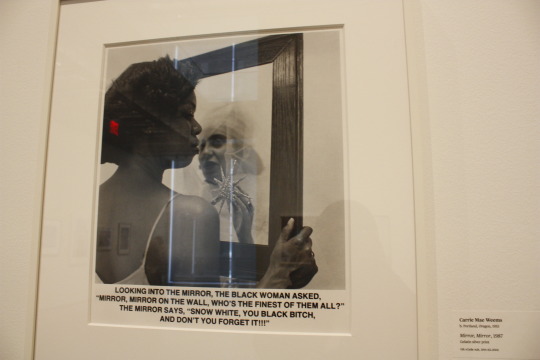
0 notes
Text
Week 8 Abayat
What?
A group of women covered with black abayas walking toward the beach.
How?
The photographer was in a higher position about 20 feet away. No artificial light- all natural. Fast shutter speed. Aperture is narrow, f 16- f22..
Why?
Staged.
0 notes
Text
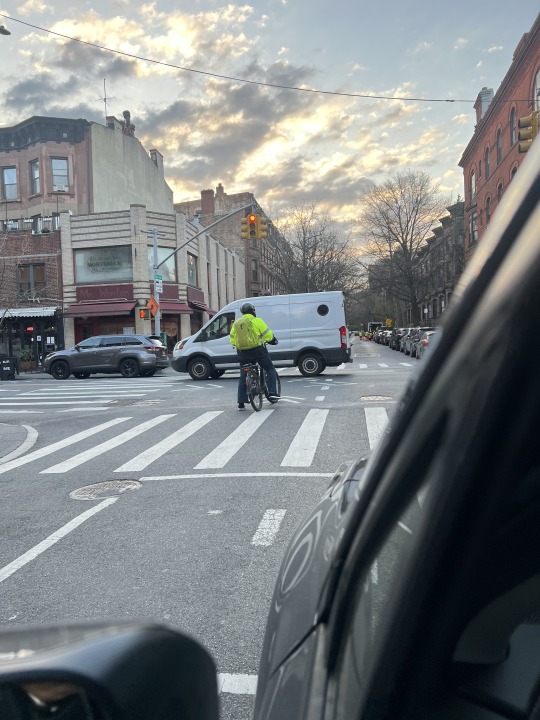
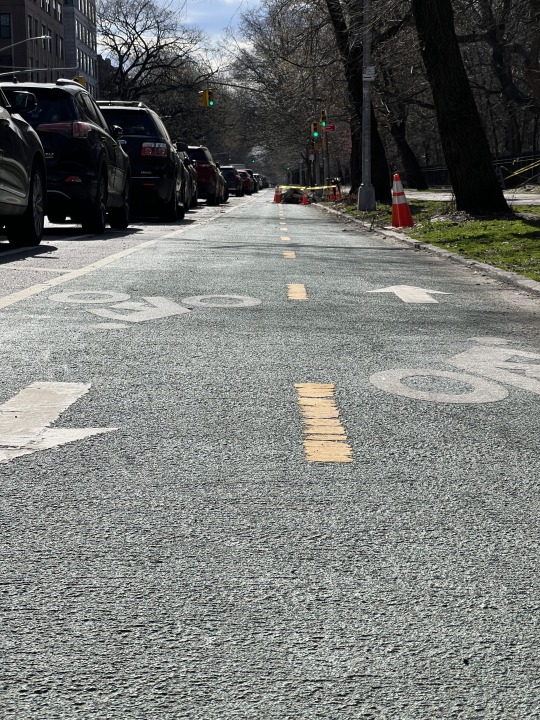




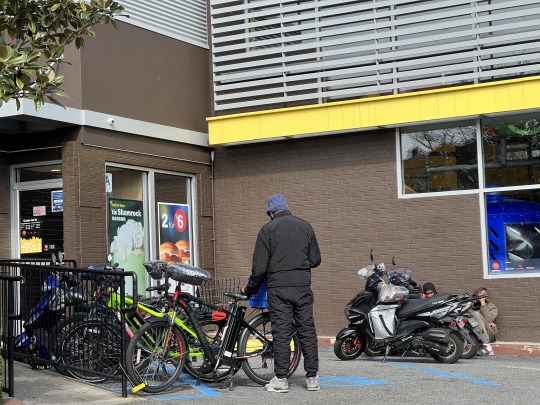



Bicycles are versatile in today’s time. They are also very accessible and highly promoted for our environment. Though not the safest for the people riding due to the lack of bike lanes and reckless drivers. Bicycles help the riders avoid rush hour traffic, get to where they’re going faster, especially in a city like ours. They are also a means of income, for those who utilize them to make deliveries. They are also beneficial to the riders health, since they are a form of exercise. Many cities now promote them by providing station where they can be rented. You can rent a bike almost anywhere, certain streets, avenues, high traffic places like in downs town areas.
0 notes
Text
Week 7 - Boy with a Beatle Pet
What?
A boy laying on the grass in some kind of a garden with a string attached to his finger with a beatle at the other end. The background is blurry. The boy's eyes are closed.
How?
The photographer is down to the ground the same level of the boy. The photo is a closeup, about 3 feet away. Everything other than the boy's face, his hand, and the beatle is out of focus. The picture was taken with wide aperture.
Why?
The photographer wanted to capture a strange thing that got his attention like having an unusual pet like what the boy had crawling on his forhead.
0 notes
Text
Week 6 - Kids in Fear
What?
A group of children that varies in ages, mostly looking up to the sky, that their faces showing fear, anxious, or confusion. In the back, there are more children with adults, but their reactions are calmer maybe because they aren't yet aware of what the first group are seeing. Some slogan banners in the back that are out of focus.
How?
The photographer was close to the first group of children. Used wide lens and natural light. Tried to capture the children's face's expression.
Why?
A Journalist that would like to show the world the victims of unjustified war.
0 notes
Text
Week 5 Black and White
What?
Black and white photograph of a porch. Some of the branches of the leaves that are shown are zoomed in, but most are blurred out or zoomed out. The door is not in the picture, which give the feeling of not welcome, but there is a window peaking that may give the feeling of curiosity to see what is inside. The white fence gives a feeling of clean and well maintained.
How?
The photograph was hot with black and white film. The distance is not far from the fence, about 4-5 feet away. During daytime so the flash wasn't used, natural light. The photographer was hiding behind the bushes, maybe to surprise someone.
Why?
Dawoud Bey took this picture among others to trace the Underground Railroad in Ohio. Maybe he chose a black and white film to give us the feeling of the past. The spot, he picked to take the picture from, was another indicator of the dangerous trip that was taken by the people that used the road to reach for freedom.
0 notes
Text
Place
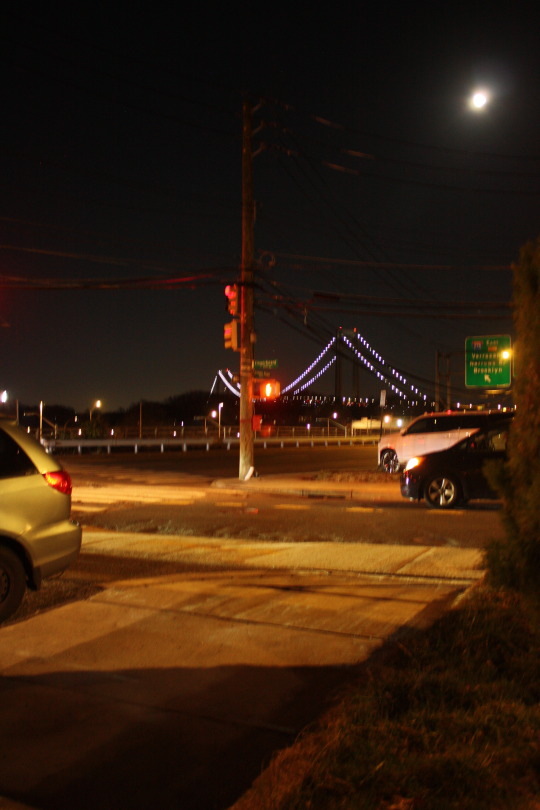
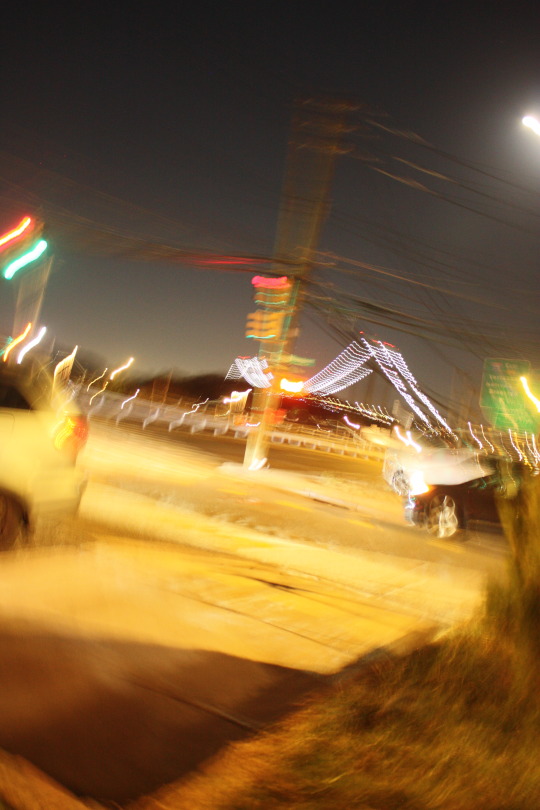
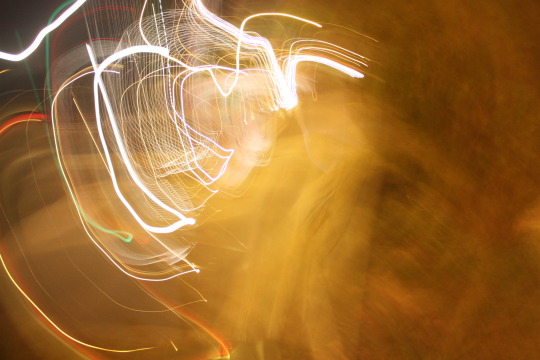
Saturday 2/24/24 9:26 pm iso 800 shutter 3 sRGB
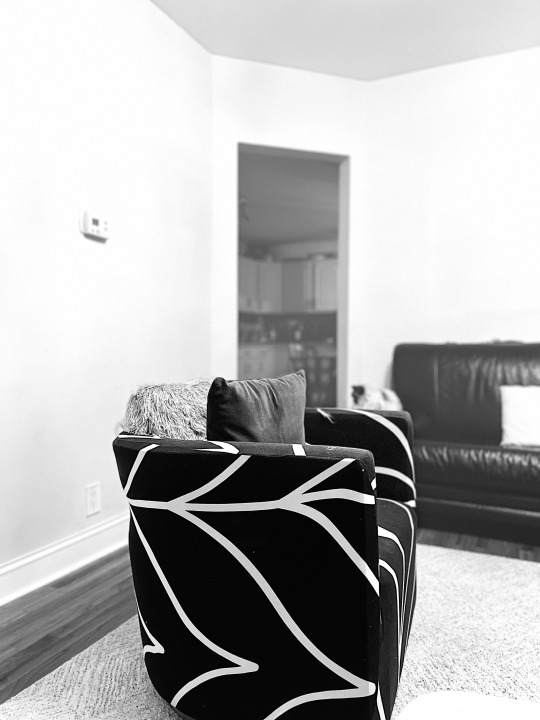
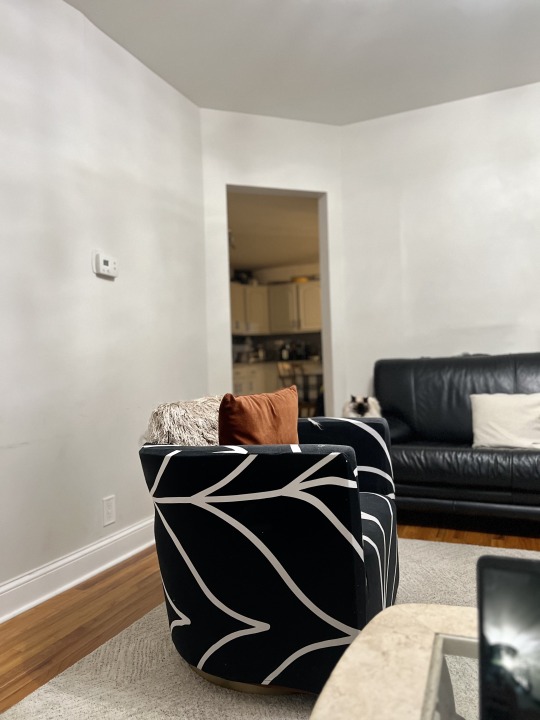
Thursday 2/22/2024 11:55 pm iPhone ProMax wide camera -26 mm
f1.5 12 mp 3024x40323 ISO 640
right - 11:56 ISO 500
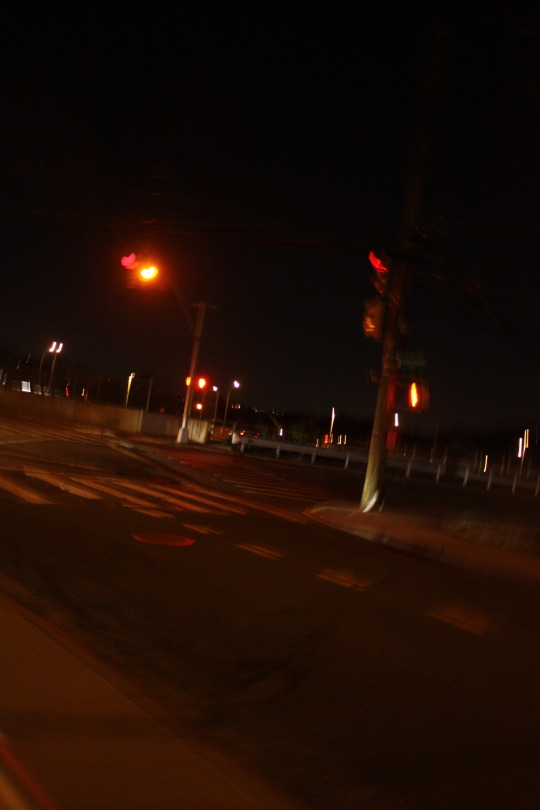
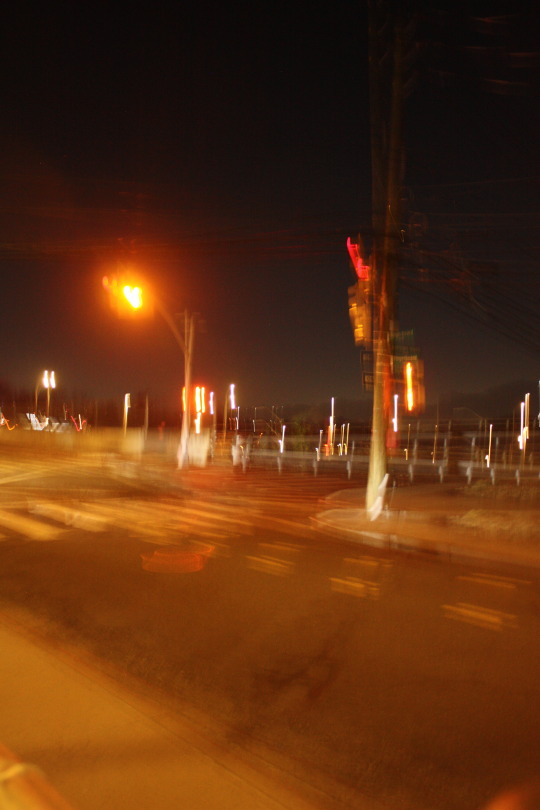

Saturday 2/24/2024 9 :27 pm ISO 800 sRGB 2" 3.5 +2
0 notes
Text
Week 4 Foggy
What?
I see a gray picture. It has shades of grey with the lighter, almost white, grey towards the top.
It looks like the horizon line became so wide or it was eaten by the sky.
No land on sight. Or the land is swollen by the thick fog.
Why?
The photographer, maybe, predicting a storm, so he is trying to capture the clam before. On the other hand, the photographer could be trying to capture the calm after the storm.
How?
Top of a boat or a low flying small airplane.
0 notes


